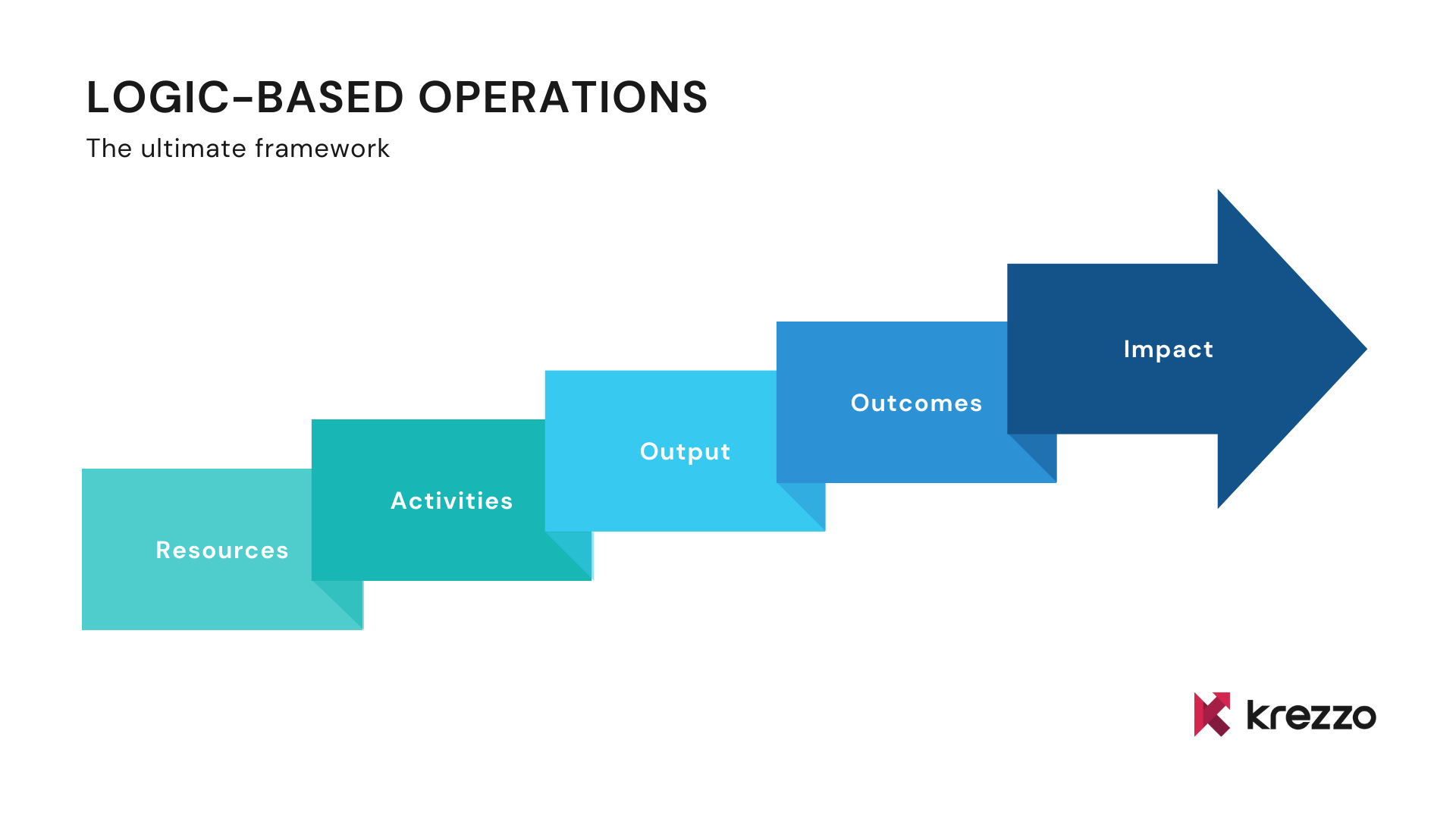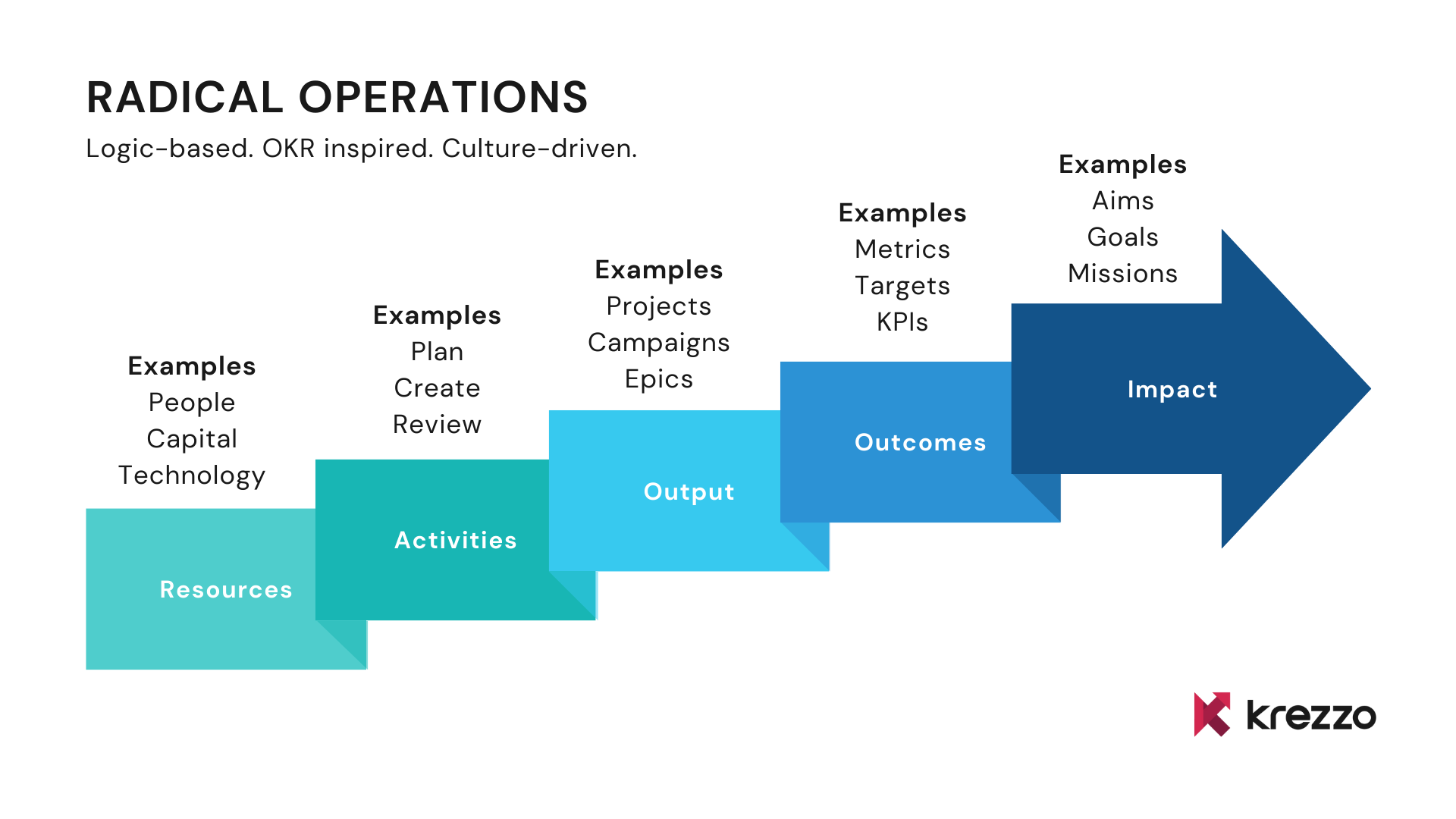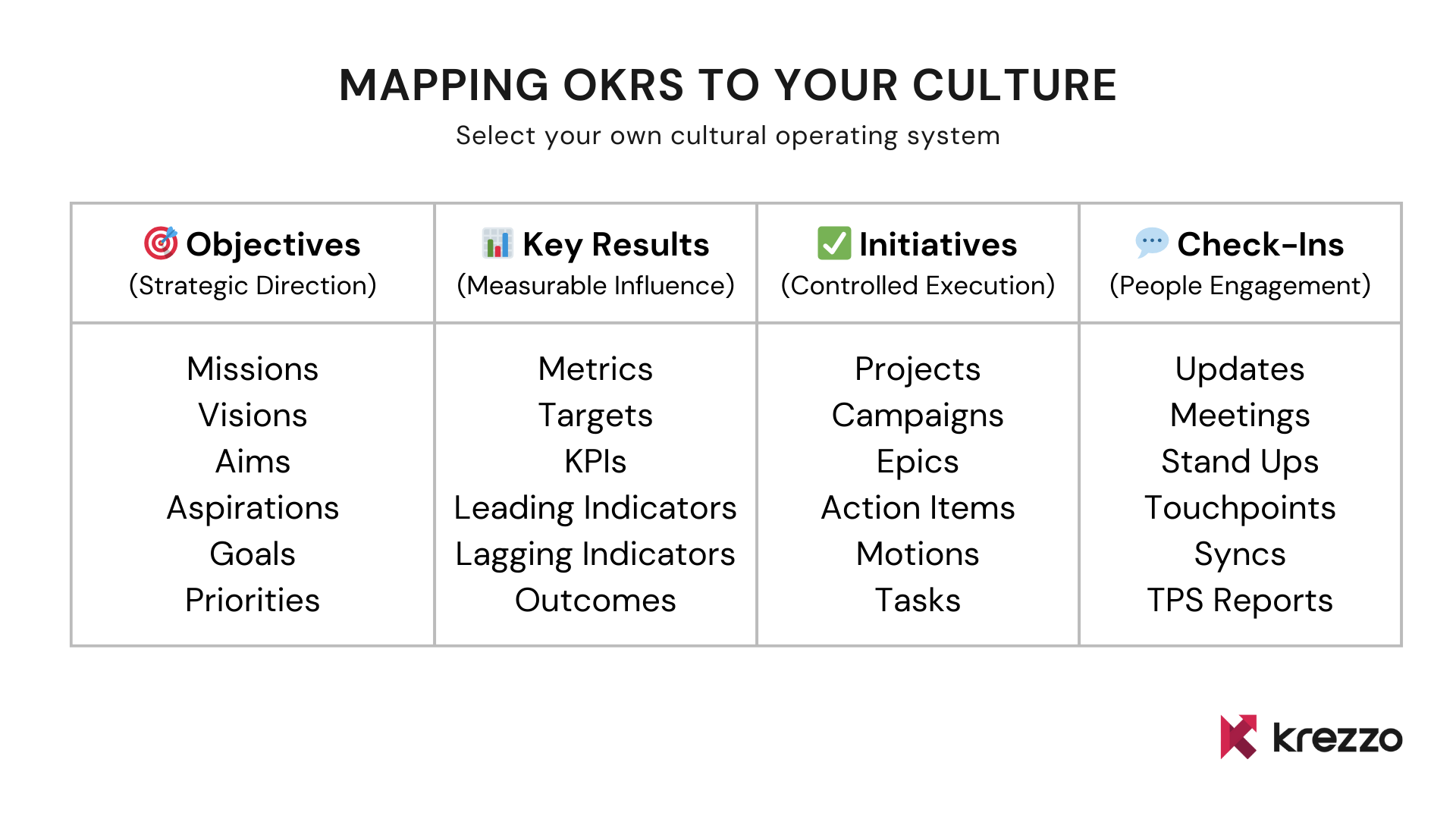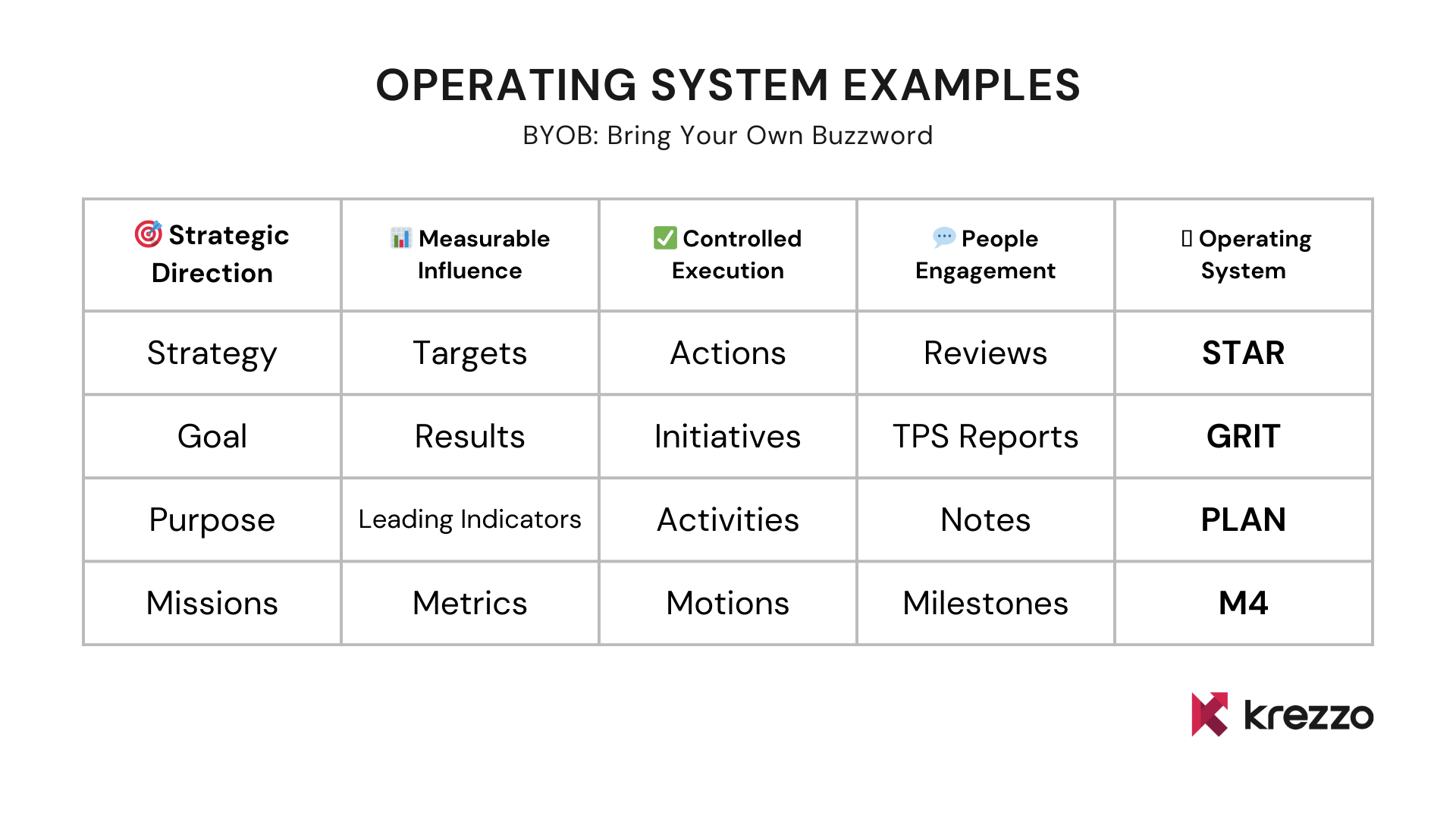8 min read
Rethink OKRs: Improve Cultural Engagement with Your Own System
Here we'll explore the backstory of OKRs, what's changing in the markets, and why it's important to stay ahead of the...
By: Stephen Newman Sep 7, 2023 11:26:29 AM

Here we'll explore the backstory of OKRs, what's changing in the markets, and why it's important to stay ahead of the curve heading into 2024. Sit down, relax, and let's unpack why it's time to "Rethink OKRs."
OKRs (Objectives & Key Results) have a long documented history and evolution. Drucker. Grove. Doerr. You likely know the story. Big giant companies like Intel, Linkedin, and Google decided to adopt the OKR framework, and they grew like crazy. Sounds compelling in theory, but it's not magic, and there's more to unpack underneath the hood.
The Google case study is the most synonymous with OKRs, and the founders are on record as saying that OKRs helped to drive 10x growth, but there's one overlooked really critical detail (aside from having a revolutionary technology). They adopted them early on in the company's history, and stuck with them.

OKRs became part of the way the company operated, and then it just became part of the company culture. It didn't happen overnight, but it was a combination of good timing, a motivated team, and a pretty awesome search engine.
Over the course of the next two decades, OKRs picked up steam and started to go mainstream. The book Measure What Matters was read by plenty of board members and executives, who then tasked operations, HR, and Chiefs of Staff to implement this magical methodology. Consultants began popping up. Technology companies got funding. Discussions over OKRs vs. KPIs began, or the proper usage and definition of each (and still continue today). There was a significant influx of OKR programs launched, especially around COVID-19. It was an exciting time, especially while markets were booming.

Although there's been a massive uptick in awareness, and plenty of OKR programs have done well and built operational momentum, others have struggled and ultimately failed. Change is hard, and it didn't help that there was a lot of conflicting information about OKRs. It's not the fault of OKRs, but rather a combination of other factors such as lack of training or complex tooling that degraded sentiment and successful adoption.
Ultimately, OKRs is just an acronym and a flexible system of internal communications designed to create alignment. There's really no 'one-size-fits-all' approach, although following best practices can undoubtedly help operational leaders avoid some of the common pitfalls. This is both a blessing and a curse for OKRs. It's like a diet. Follow it correctly and you'll likely see results, but if you have one too many cheat days, you're unlikely to see a difference.
Acronyms, systems, and operational blueprints are everywhere. They attempt to organize communication in a more digestible way. OKRs are no different. If you dig deep into OKRs though and examine them closer, you will find they also actually follow a logical model. Yes, this is another framework, but the difference between this and the corporate buzzword of the week or trendy methodologies is the logic model is grounded in... well, logic!

Resources (people, time, capital) engage in activities (planning, creating, analyzing). Executing those activities creates output (features, assets, materials). The output is then interacted with by people which can create outcomes (awareness, decisions, satisfaction/dissatisfaction). Ultimately, those outcomes, or changes in behavior, create an impact (economic, cultural, environmental).
Makes sense.
When you start to evaluate any of these operational systems or frameworks, they all seem to resemble the same structure, but with different labels. Your previous experiences will inform how you define certain categories or respond to them. It's no different from how marketers have different definitions for lead generation, or how sales leaders define the various stages in their pipeline. It really just depends on how your company likes to work and your business model.
In the context of OKRs and this logic-based way of thinking, there are a lot of similarities you can extract. As a company grows, it gets more people and resources, which means there are more capabilities to conduct activities that require planning and evaluation. Those activities will ideally move the needle on critical metrics that measure success. The ideal impact is happy customers, people, and cultures.

So when companies come together and start planning, most are already past the point of people and activities, so now it comes down to defining the top three buckets. Executives want results (revenue) and happy customers/employees, but how you get there is dependent on the "boots on the ground" people who do the day-to-day work. The ideal scenario here is a collaborative effort that balances top-down strategy with bottom-up execution. This is operational nirvana.
If you present OKRs (or any system) in this light and connect the two ends, the likelihood of success will be greater. If 100% bottom-up is total anarchy, and 100% top-down is command and control, try and find a democratic compromise that establishes a nice check and balance.
If you are just starting out and are considering OKRs (or you want to revamp your existing program), perhaps instead of trying to shoehorn OKRs into your culture when maybe they aren't ready, make it an exercise and come up with your own acronym! Radical Operations summarizes a disruptive shift in how companies align, execute, and perform. The traditional playbooks aren't working like they should, so time to mix it up.

We've seen a number of successful operational programs decide to take one (or all) of the core components of OKRs and make them their own. This Radical Operations mindset gives an opportunity to shake up the status quo and reignite passion and purpose. The benefits here are you bypass the eyeball rolls with OKRs, and can instead make it fun and bring the company together. Yes, underneath the surface it's basically just a different version of OKRs, but if it creates alignment, adoption, and ultimately driving results, who cares?

The goal isn't to prove that one framework works better than the other or to sneakily have your company using OKRs. The goal is to improve internal communication, visibility, and performance. That's the goal. How you get there doesn't matter, so if you can bypass some of the internal red tape and streamline your way to success, go for it.
Now, here's where things can get fun. In the corporate world, we're no strangers to mindless acronyms. It's kind of a necessary evil. Better to just have an acronym than hear your boss say the full "thing" every time. So through the lens of OKRs, if you're following along here, you can see that each bucket is just a label, but if you follow the thinking then you can actually create your own system.

They all follow the same logic.
Direction <> Measurement <> Execution <> Engagement
Notice this can go both ways, top-down or bottom-up. Sometimes your frontline people can influence the strategic direction of your company with a simple analysis. Other times, your visionaries need to steer the ship before others can connect the dots. The point is, it doesn't really matter which direction the operations flow, as long as they flow smoothly!
Hopefully, you've seen Office Space and get the reference, but we've heard from people that completing the "Check-In" with OKRs (the process of updating your OKRs and adding additional commentary, etc.) is equivalent to having Bill Lumbergh ask you to fill out your TPS Reports. We get it. Not exactly fun or streamlined, but sometimes it's necessary to share more context other than the status or actuals. Automation can certainly help, but most of time you still want to hear it from the "horse's mouth." Even better, if you do it right, it can be a point of celebration and excitement. It's all about how you frame the conversation.
Here's a quick demo video of the Check-In turning into an ironical TPS Report.
We didn't have time to add an audio track to the video, but it's recommended to play 'Damn It Feels to Be a Gangsta' in the background while you watch it. ;)
Employee engagement comes in many forms, but when trying to actually create alignment you have to use all the tools and talents at your disposal. If it means creating an ironic tip of the cap to the 90's corporate classic, so be it. That's what's happening, and Lumbergh approves.
Here are some additional requirements for success, no matter what you use. There are tried and true best practices in organizational change management.
💪 Strong Leadership - This is required, otherwise you’ll lose steam. Pick a framework and be patient. And a program leader is critical. Technology alone is not the solution. Technology and really simple and delightful training isn’t going to cut it either. It takes a leader to drive engagement and adoption. Sports teams without a coach would be chaotic. You need to select someone to lead the operational program. Your Chief of Staff, VP of Ops, or any highly organized and collaborative management type.
🌎 Communicate Why - Find the why. It’s a pretty common practice these days just just ask ‘why’ 17 times, but for making a decision for OKRs or any operating system, knowing why and communicating why is critical. Is it to drive growth? Is it to achieve a bold mission for customers? Is it to change the world? Is it because everyone is so busy you simply need to put some operational guardrails in place? Is it to improve visibility? Your why will be similar to your mission or vision. In fact, you can probably just consolidate them all.
🛠️ Just Execute - Clarify execution from outcomes (one you control, the other you influence). Set aside experiments and celebrate/share learnings (improves buy-in) and build momentum. In order to generate momentum, execute. Even failing can create strength. Roll up your sleeves and get after it. Build, create, launch, and learn. Rinse and repeat.
😽 K.I.S.S. (Keep It Simple Stupid) - Keep it simple (data integration isn’t enough, you want to hear context from your people). The “Executive Summary” paired with unique snippets of context can paint a more holistic picture. Set a simple weekly or bi-weekly cadence and review progress as a team. Keep it open, honest, and positive.
Want more examples of logic-based acronyms or tips on how to create and implement your own Operating System?
Download the Radical Operations Playbook
Sep 7, 2023by Stephen Newman
Here we'll explore the backstory of OKRs, what's changing in the markets, and why it's important to stay ahead of the...
Aug 20, 2023by Stephen Newman
Let's skip the part where the basics of OKRs are shared and debates over definitions are had. Let's get right to the...
Aug 13, 2023by Stephen Newman
The difference between OKRs & KPIs is an ongoing conversation with the common narrative being "KPIs are for running the...